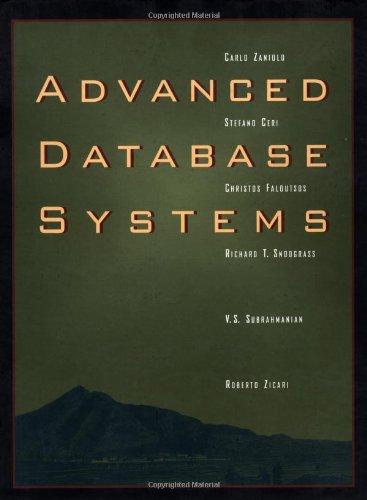Question
1) Write a program that calculates the invoice of each flat in an apartment building. Assume that there are N flats in a building and
1) Write a program that calculates the invoice of each flat in an apartment building. Assume that there are N flats in a building and apartment heating is the central system. 30% of bill will be shared equally among the flats, the rest 70% will be shared according to the consumption of each flat.
Sample Calculation:
Suppose that an apartment building has 3 flats
Consumption of each flat (m3 ): 12.8, 23, 9.2
Total Bill: 320.40 TL o 30% of bill: 96.12 TL o 70% of bill: 224.28 TL
Then, the bill for each flat should be calculated as follows:
o The bill for Flat #1: 32.04 + 63.80 = 95.83 TL
o The bill for Flat #2: 32.04 + 114.63 = 146.67 TL
o The bill for Flat #3: 32.04 + 45.85 = 77.89 TL
Your program must have the following methods:
a) public static void main(String[] args)
Main method will take the inputs from the user.
Then, it will invoke the methods calculateTheInvoice() and printBills(), respectively
. b) public static double[] calculateTheInvoice (double[] flats, double totalBill)
You should calculate the bill of each flat based on the given sample calculation scenario.
This method should take the following parameters:
o A double array flats that indicates the consumption of each flat.
o A double value totalBill that contains the total consumption of the whole apartment building.
Then, the method should return a double array, which contains the calculated bill for each flat, to the main() method
. c) public static void printBills (double[] bills)
You should print the values to the console display.
First input (N) is the number of flats in the apartment building.
It is followed by N inputs for N flat consumption, and the last input is for the total bill.
o Input Format: N C1 C2 C3 .. Cn TotalBill
o Sample Input: 3 12.8 23 9.2 320.40
where,
N is the number of flats, C1, C2, .. Cn are the consumptions of each flat, and TotalBill is the total bill for the apartment building.
d) Sample Runs
i) Sample Run 1
(Input: 3 12.8 23 9.2 320.40)
3 12.8 23 9.2 320.40
Flat #1: 95.83
Flat #2: 146.67
Flat #3: 77.89
ii) Sample Run 2
(Input: 15 12 14.2 15.87 21.4 19 13 8.1 11 15.14 16 23.14 27 5.98 7.18 17 812.90)
15 12 14.2 15.87 21.4 19 13 8.1 11 15.14 16 23.14 27 5.98 7.18 17 812.90
Flat #1: 46.47
Flat #2: 52.0
Flat #3: 56.21
Flat #4: 70.13
Flat #5: 64.09
Flat #6: 48.98
Flat #7: 36.65
Flat #8: 43.95
Flat #9: 54.37
Flat #10: 56.54
Flat #11: 74.51
Flat #12: 84.23
Flat #13: 31.31
Flat #14: 34.33
Flat #15: 59.05
iii) Sample Run 3
(Input: 5 44.02 0 17 21.01 7.56 210.82)
5 44.02 0 17 21.01 7.56 210.82 1.
Flat: 85.15 2.
Flat: 12.64 3.
Flat: 40.65 4.
Flat: 47.25 5.
Flat: 25.
PLEASE write new code do not reuse java eclipse
I WILL BE VERY HAPPY IF YOU TRY TO WRITE A BEGINNING-LEVELS JAVA ( ECLIPSE ) CODE. DO NOT USE A CLASS OUTSIDE THE SCANNER CLASS ( import.util.Scanner ) SO ( do not use import java.util.Collections , etc imort java.io
Step by Step Solution
There are 3 Steps involved in it
Step: 1

Get Instant Access to Expert-Tailored Solutions
See step-by-step solutions with expert insights and AI powered tools for academic success
Step: 2

Step: 3

Ace Your Homework with AI
Get the answers you need in no time with our AI-driven, step-by-step assistance
Get Started


